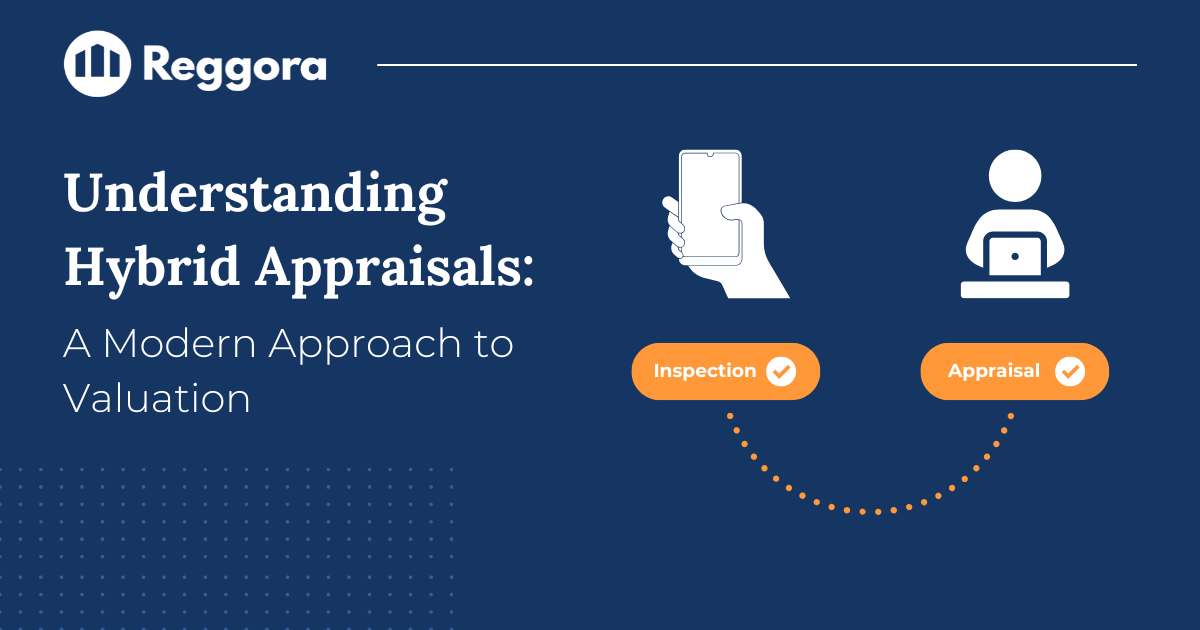The Lender's Path to Accurate Appraisal Management ROI

When assessing any potential investment in technology, one of the first questions asked by CEOs, COOs, and CFOs is, “What’s our expected ROI?”
However, for many reasons, mortgage lenders have struggled to accurately measure the results created by investments in any type of technology, leading to doubt and confusion from the very beginning.
The most important part of building an accurate ROI is setting clear expectations as to the business challenge new technology will address. From there, it’s reasonably straightforward to establish the applicable metrics, collect, and analyze the data.
Gauging the impact of appraisal management technology is no different than that of any other. However, in our recently released white paper, we did just that, detailing real business challenges and multiple lenders’ use of technology to address them. Using multiple case studies and industry research, we determined that Reggora’s appraisal management technology reduces the average cost per loan by up to $258.
In doing so, we shared how lenders attacked a number of different challenges. These appraisal-related pain points included:
- Revenue loss caused by appraisers raising their fees
- The extensive amount of time it takes to process appraisal payments, billing, and accounting manually
- The excessive time required to manage each order
- The lack of visibility LOs have into the status of appraisal orders
- Getting an appraisal done frustrates borrowers
Here is a more detailed look into each of these problem areas.
Problem: Revenue loss resulting from appraisers raising their fees
When lenders disclose fees to the borrower and then later find that their appraiser has escalated the fee, they have the option of re-disclosing the Change of Circumstance to the borrower and collecting the higher fee. But in 26% of transactions, appraisers issue a fee increase that doesn't qualify for a Change of Circumstance. In these cases, the lender is completely stuck with the escalated fee, which cost $181 per loan on average.

The lenders we documented applied Reggora technology, however, to proactively update fee schedules in the markets where this happens.
As a result, these lenders saw a reduction of revenue leakage from fee escalations by 65% without the need to issue a Change of Circumstance or increasing the risk of fallout.
Our white paper also details the case of PRMG, which applied our tools to create particularly strong results.
Problem: It takes too long to handle appraisal payments, billing, and accounting
Lenders are finding that they can easily cut the time it takes to manage invoicing/payment collection/accounting/vendor payment in half with Reggora technology. This reduces costs and the number of FTEs required to perform these slow, expensive manual tasks.
By redistributing this function, Reggora empowers lenders to, in turn, reposition those FTEs for more productive, sales-related tasks.
In one case, a private mortgage company was able to reduce the time it takes to manage an appraisal order and billing by 50% and reduced its cost per loan by $192.
But the most interesting example might be that of Alpha Mortgage, which eliminated 15 hours of work per week from its accounting team by automating payment collection activities. In our new white paper, we’ve shared the details as to how this was possible.
Problem: It takes too long to manage appraisal orders
Reggora recently conducted a study in conjunction with industry-leader STRATMOR Group, which clearly showed that utilizing human resources in the appraisal process is time-consuming, under-productive, and expensive. Time spent on order creation, order allocation, payment, and status updates makes it harder for staff to solve real problems or put more time into more complex sales-related or production-related tasks.

We also looked at Alpha Mortgage, which embraced new appraisal automation solutions from Reggora. In so doing, Alpha Mortgage reduced the number of FTEs on the appraisal desk by 75%, reducing the cost per loan by $70.
We saw similar results with PRMG as well, and have provided the return the average lender sees from reducing order management time within the white paper.
Problem: Loan Officers (LOs) don’t have visibility into the status of appraisals on their loans
When the LO can’t answer the borrower’s questions about the status of the appraisal, the borrowers lose faith in their trusted advisors. The result can eventually become loan fallout. However, we found several lenders who used digital solutions to give LOs access to appraisal status views, sorted by priority, directly within their LOS and even smartphone to help better manage their pipeline. This enhanced visibility and an exception-based workflow results in improved borrower experience, reduction of fallout, increased profitability, and improved retention rate for the best loan officers (which is a far superior approach to staffing management than other costly recruiting methods).
Borrowers have a better experience when there is less uncertainty in the process. When LOs and loan processors can quickly answer their questions about the status of their appraisal report, it improves their experience and increases referral rates.
This is exactly what both North Easton Savings Bank and PRMG experienced when new technology from Reggora gave them the power to routinely share good news with LOs and referral centers about each appraisal.
Our white paper has spelled out exactly how the key decision-makers at each lender viewed the challenges they hoped to address with new technology and the results they experienced.
Problem: Getting an appraisal done frustrates borrowers and isn’t a fast, convenient part of your digital mortgage
Turn times are incredibly important to all stakeholders in the mortgage process. The longer it takes to turn an appraisal, typically, the lower the borrower satisfaction rate becomes.
We heard this clearly from Assurance Financial, a lender that used Reggora appraisal management technology to reduce appraisal turn times by 7 days! Or Neat Loans, another lender that benefitted from shorter turn times and higher borrower satisfaction by routinely closing loans in just 15 days.
These lenders used technology to take control of their appraisal billing, resources spent managing invoicing, payment collection, and financial tasks related to collecting appraisal payments & paying appraisal vendors to achieve $34 savings per file. They also accelerated cycle time, reduced revenue leakage from uncollected fees, and streamlined appraisal order management. We’ve laid out the details of how lenders are able to reduce their cost per loan file by up to $258 and all the pain points appraisal management technology alleviates in our white paper.
How lenders can reduce their cost per loan
The bottom line is that the typical lender using effective technology to address appraisal bottlenecks and inefficiencies is seeing a significant ROI.
And while every institution is different in its specific calculations, the exact ROI will be an exercise specific to your overall situation. If you’re ready to calculate how much your organization could save, contact our mortgage solutions team for a free cost per loan consultation. Our team will quantify your current appraisal pain points and provide a detailed model of the costs you can eliminate.








.svg)